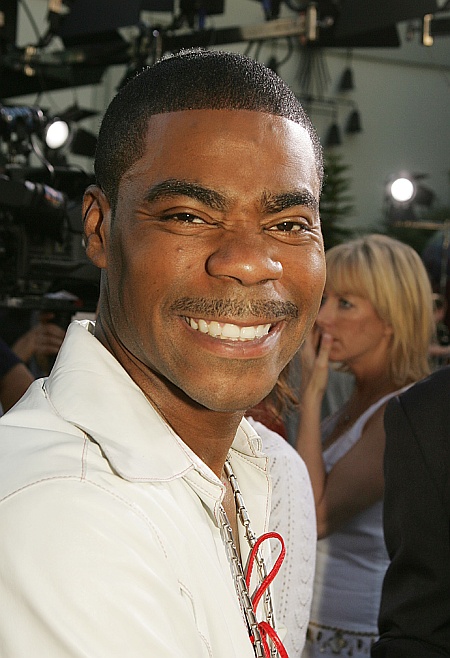Celebrity crash shines spotlight on HOS rules
A New Jersey highway crash that injured comedian Tracy Morgan and killed another comedian has shined a spotlight on the issue of fatigued truckers behind the wheel on American highways.
Wal-Mart truck driver Kevin Roper had had no sleep for more than 24 hours before he plowed into the back of Morgan’s limo bus about 1 a.m. on June 8, according to local authorities. Roper, 35, of Jonesboro, Georgia, apparently failed to slow for traffic ahead on the New Jersey Turnpike in Cranbury Township and swerved at the last minute to avoid a crash. Instead, his big rig smashed into the back of Morgan’s chauffeured Mercedes limo bus, authorities said.
McNair was killed and Morgan, 45, a former “Saturday Night Live” and “30 Rock” cast member, and two other companions were hospitalized in critical condition. Roper has been charged with death by auto and four counts of assault by auto.
Safety advocates are trying to walk the fine line between expressing sympathy for those either killed or injured in the crash while using the incident to further their agendas.
“This is a major moment really to stop the trucking industry,” said Joan Claybrook, former head of the National Highway Traffic Safety Administration. “It seems no matter what we do in terms of pushing to get safer trucks on highways, the trucking industry uses its clout to either undo those improvements that we do get or stops any that we’re trying to push,” she added.
The crash came only days after the Owner-Operator Independent Drivers Association (OOIDA) called for the resignation of Federal Motor Carrier Safety Administration Administrator (FMCSA) Anne Ferro over the Hours of Service (HOS) rules.
Last week, an amendment by Sen. Susan Collins (R-Maine) that would suspend the 34-hour restart portion of the HOS rule was approved by the U.S. Senate Appropriations Committee.
Under Collins’ provision, truckers could go back to taking 34 hours off between every workweek with no requirement for two nighttime periods during their time off. Collins and trucking industry officials said it is safer for truckers to drive at night when there is less traffic and that the current regulations increase truck traffic on roads during morning rush hours. Safety advocates and administration officials said there is no evidence that’s the case.
American Trucking Associations (ATA) CEO Bill Graves weighed in on the topic.
“The issue of highway safety, and in particular the safety of the trucking industry, has been at the forefront of the national conversation for several days due to a high profile incident in New Jersey,” Graves said. “First, as always, our thoughts are with the victims of this tragedy and their families. Every crash on our highways is a tragedy and that’s why the industry places safety as our highest priority.”
Graves then reaffirmed ATA’s stance on HOS and encouraged drivers to get plenty of rest during their off-duty time.
“Second, I want to address several issues regarding the Hours of Service rules and driver fatigue generally. The HOS rules – whether they are the current regulations, the pre-2013 rules, or the rules with changes we hope to see as a result of Congressional action – only place limits on driving and on-duty time and require that between work periods drivers take a minimum of 10 consecutive hours off-duty. But they do not dictate what drivers do during that off-duty period. No rule can address what a driver does in his or her off-duty time. The industry – including ATA, our member fleets, our state associations and the millions of safe, professional truck drivers on the road today – strongly believe that drivers must take advantage of their off-duty periods for rest and that drivers should not drive if they are fatigued,” he said.
Nearly 4,000 people die in large truck crashes each year, and driver fatigue is a leading factor, according to FMCSA. The rate of fatal crashes involving large trucks rose from 1.03 per 100 million vehicle miles traveled in 2009 to 1.29 in 2012.
The trucking industry has been sparring with safety advocates and unions over driver hours for two decades, including several trips to federal court.
Bill Simon, president of Wal-Mart U.S., apologized for the accident and said the company is cooperating with law enforcement.
“With regards to news reports that suggest Mr. Roper was working for 24 hours, it is our belief that Mr. Roper was operating within the federal hours of service regulations. The details are the subject of the ongoing investigation and we are cooperating fully with the appropriate law enforcement agencies. The investigation is ongoing and unfortunately we can’t comment further on the specifics. Federal law requires drivers to work no more than 14 hours for any shift and 11 hours of driving,” said Wal-Mart spokeswoman Brooke Buchanan.






